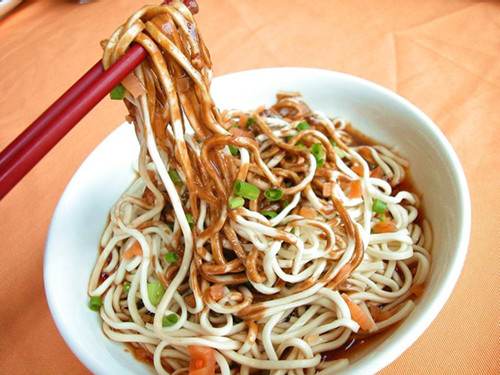
pearl-like meatball

hot dry noodles
Hubei is one of the birthplaces of Chinese and its ancient culture. In ancient Chu culture, the food style is mainly fresh and salty, which can date back to the ages of Qu Yuan. Porridge and soup were mostly favored. As the saying goes, “Drinking soup before meal each day keeps the doctor away." It has exerted great influence up to now. Besides, there are a lot of choices, such as in Sijimei Restaurant, steamed bun with gravy stuffing in Sijimei Restaurant, Soup in Xiaotaoyuan Restaurant, hot and dry noodles in Cailinji Restaurant, Dumpling in Tanyanji Restaurant, Shaomei in Shuixiangju Restaurant, Tangyuan in Wufangzhai Restaurant, Steamed Wuchang Fish in Wuchang Restaurant, and so on. The most famous were hot dry noodles.
Hubei cuisine consists of dishes from Wuhan, Jinnan, Xiangyun and Southeast Hubei. Wuhan cuisine originated in an area where there is a major-scale inland fishery. Fish is the main ingredient of many dishes, such as steamed Wuchang fish, penholder-like fish belly, brown-sauce-stewed fish and quick-boiled fish with oranges. Other typical local dishes include steamed triplet from Mianyang, chicken broth stewed in an earthen jar, thousand-sliced pork, calipash soup with wax gourd and medicinal soups made by the long and gentle stewing of fried chicken with seasonings.
The word Guozao (meaning having breakfast outdoors) first appeared in the book Hankou Zhuzhi Ci during the Daoguang Period of Qing Dynasty. It refers to Wuhan people's having breakfast. Because of geographical environment and economic activities, people in Wuhan got used to the custom of Guozao outdoors a long time ago. The restaurants in Wuhan are highly developed, of various kinds, and of styles of both north and south. They are scattered in many streets all over the city, prosperous and crowded. According to statistiques, as many as 100, 1000 people are engaged in the business. Guozao has been in the noticeable characteristic in this city.
|
 将本信息发给好友
将本信息发给好友  打印本页
打印本页